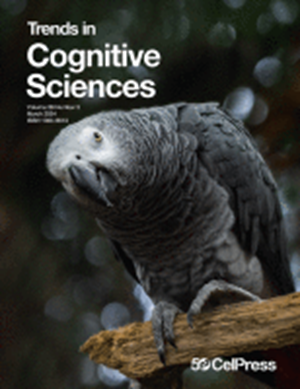大脑深处的高级视觉认知
IF 16.7
1区 心理学
Q1 BEHAVIORAL SCIENCES
Trends in Cognitive Sciences
Pub Date : 2024-12-01
Epub Date: 2024-11-01
DOI:10.1016/j.tics.2024.10.010
引用次数: 0
摘要
佩萨霍维奇及其同事最近的一项研究揭示了上丘(SC)这一通常与空间定向和运动控制相关的深层大脑结构是如何对视觉类别的抽象做出因果性贡献的。这凸显了具有运动控制标签的皮层下区域如何在高级视觉认知中发挥核心作用,并为研究开辟了途径。本文章由计算机程序翻译,如有差异,请以英文原文为准。
High-level visual cognition deep down in the brain.
A recent study by Peysakhovich and colleagues reveals how the superior colliculus (SC), a deep brain structure commonly associated with spatial orienting and motor control, causally contributes to the abstraction of visual categories. This highlights how subcortical areas with motor-control labels may have central roles in high-level visual cognition and opens avenues for investigation.
求助全文
通过发布文献求助,成功后即可免费获取论文全文。
去求助
来源期刊

Trends in Cognitive Sciences
医学-行为科学
CiteScore
27.90
自引率
1.50%
发文量
156
审稿时长
6-12 weeks
期刊介绍:
Essential reading for those working directly in the cognitive sciences or in related specialist areas, Trends in Cognitive Sciences provides an instant overview of current thinking for scientists, students and teachers who want to keep up with the latest developments in the cognitive sciences. The journal brings together research in psychology, artificial intelligence, linguistics, philosophy, computer science and neuroscience. Trends in Cognitive Sciences provides a platform for the interaction of these disciplines and the evolution of cognitive science as an independent field of study.
 求助内容:
求助内容: 应助结果提醒方式:
应助结果提醒方式:


